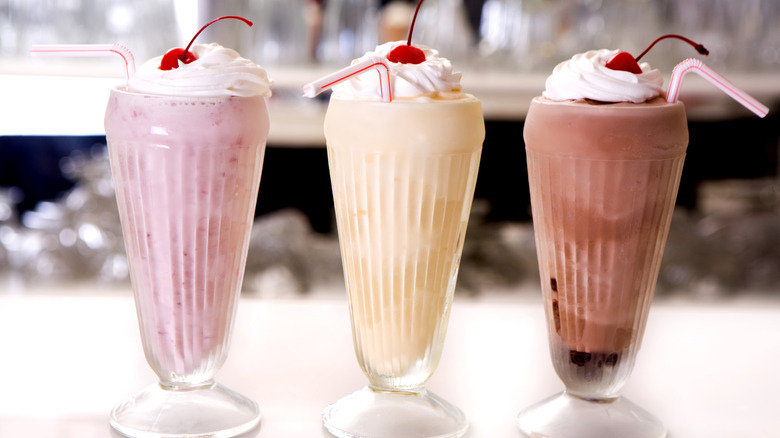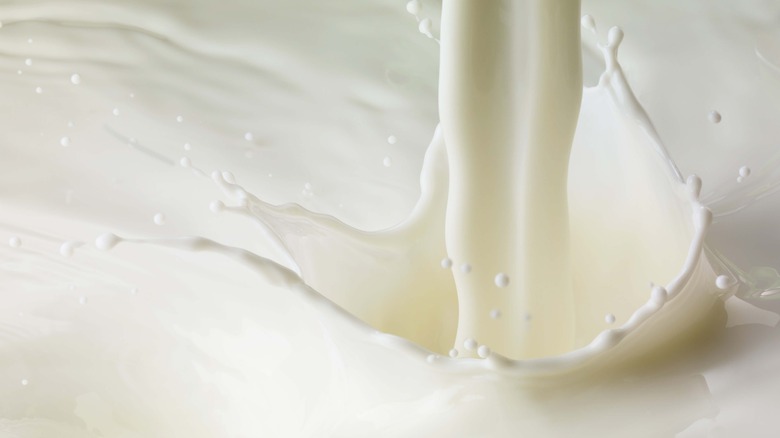The Best Milk To Use For The Ultimate Milkshake
Have you ever tried to blend a delicious milkshake at home and it didn't quite measure up to your expectations? Odds are the consistency was a little off, or the flavor wasn't as full and creamy as you remember enjoying at your favorite diner. One of the milkshake mistakes you are probably making while preparing them at home is using the wrong type of milk. Apologies to our plant-based friends who prefer milk alternatives like oat and almond, but when it comes to good quality creamy milkshakes, nothing beats whole milk. Whole milk, sometimes referred to as "full-fat milk," is the ideal choice for milkshakes because of its creamy consistency. Unlike skim milk or 2% which contain significantly less milk fat, whole milk has a similar texture to ice cream that compliments the frozen treat's flavor profile and leads to a perfectly blended sweet treat. While a milkshake made with skim milk may have a lower fat content that appeals to a health-conscious crowd, it will also result in a more watery consistency rather than the creamy smoothness that the best milkshakes require.
Before making a milkshake at home, double check these key elements
The recipe for the best vanilla milkshake in the world is as simple as it is delicious, calling for just two ingredients: Full-fat milk and a scoop of your favorite vanilla ice cream. But crafting a tasty milkshake from these two dairy products isn't as easy as tossing them into a blender and hoping for the best. The wrong milk-to-ice cream ratio can really throw off the consistency and blending process of a milkshake, even if you do use the right type of milk.
Too much milk will cause the shake to become thin and frothy, but too much ice cream may create a shake so thick, it is near impossible to drink. Daily Meal's milkshake recipe calls for one cup of ice cream and ¾ cup of cold whole milk. You also want to make sure that the ice cream you are pairing with whole milk isn't too hard. While you want the ice cream frozen in order to achieve the ideal milkshake temperature, it should be soft enough to easily scoop out of its container and into a blender. Extra hard ice cream can mess up the blending process and lead to a clumpy shake, and no one wants that, so make sure to let it sit on the counter for a couple of minutes before scooping.

